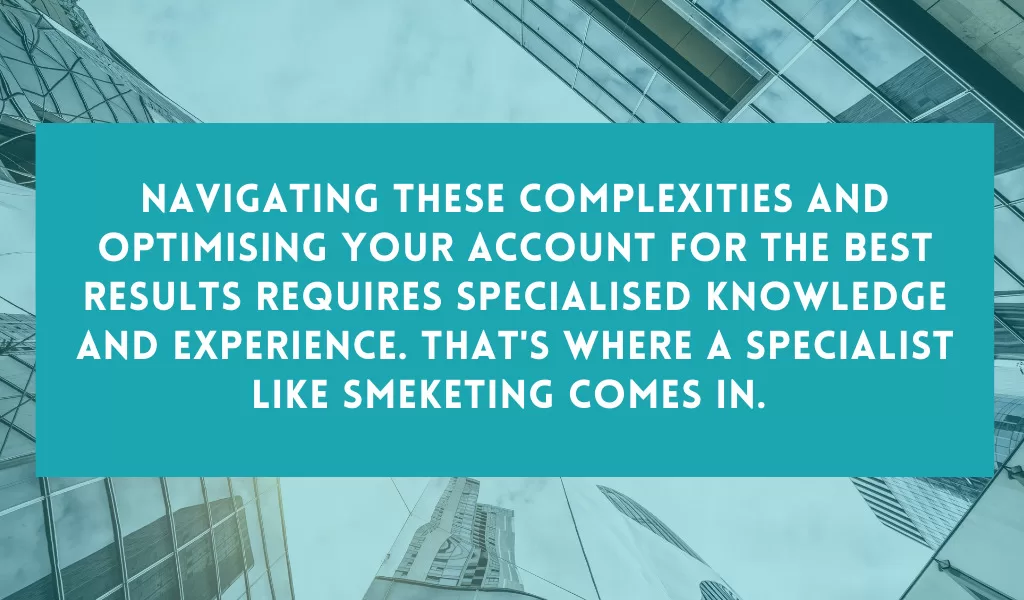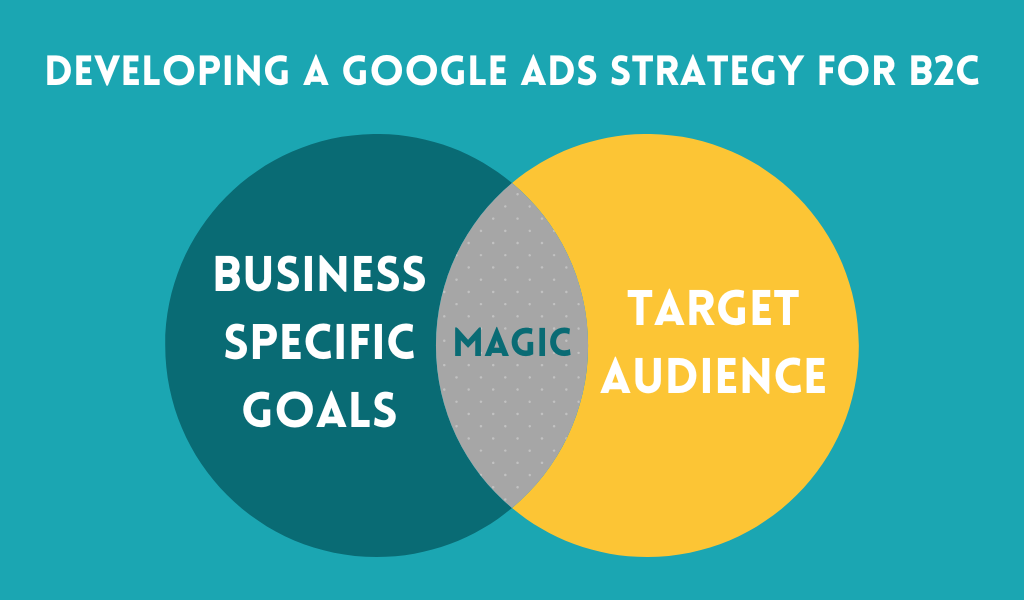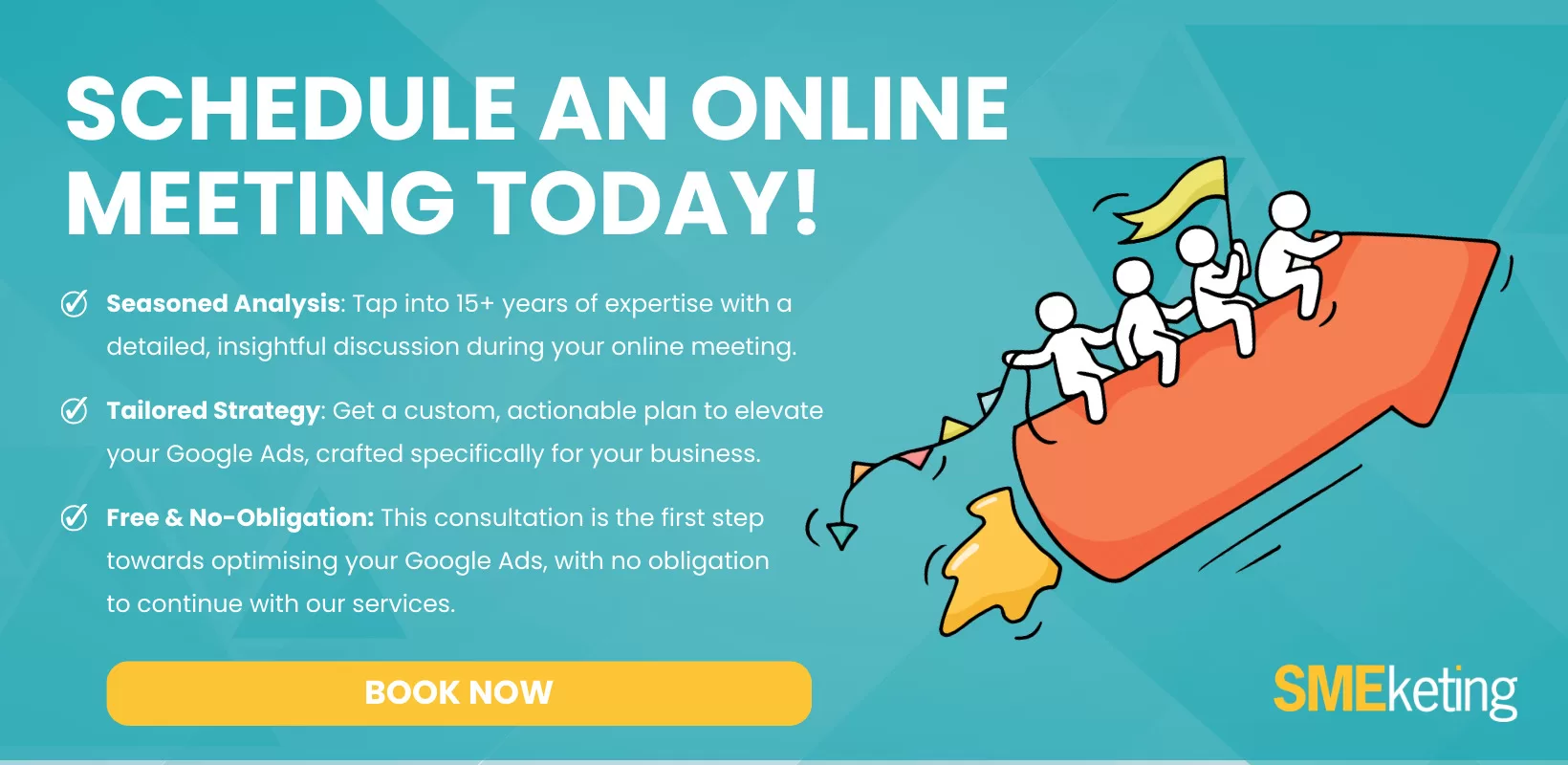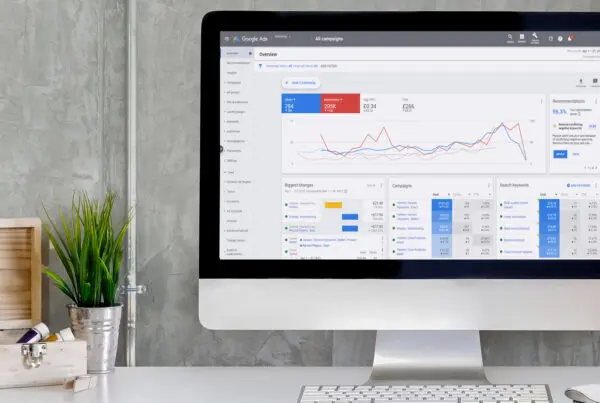Google Ads is a powerful advertising platform that can greatly benefit B2C businesses. With its vast reach and sophisticated targeting options, Google Ads provides a valuable opportunity to connect with potential customers and drive conversions.
In this comprehensive guide, we will explore the key aspects of Google Ads and how B2C businesses can leverage its potential to maximise their advertising efforts.
Understanding Google Ads
Google Ads, formerly known as Google AdWords, is an online advertising platform developed by Google.
It allows businesses to create and run advertisements on various Google platforms, including the search engine results pages (SERPs), YouTube, and partner websites within the Google Display Network.
What is Google Ads?
Google Ads is a pay-per-click (PPC) advertising model, which means that businesses only pay when their ads are clicked. This makes it a cost-effective advertising solution, as businesses have control over their budget and can optimise their campaigns based on performance metrics.
Importance of Google Ads for B2C Businesses
For B2C businesses, Google Ads offers unparalleled reach and targeting capabilities. With billions of searches conducted on Google every day, businesses can potentially reach millions of potential customers who are actively searching for products or services similar to theirs.
Furthermore, Google Ads allows businesses to target specific demographics, locations, and interests, ensuring that their ads are shown to the most relevant audience. This level of targeting precision can greatly improve the chances of attracting qualified leads and generating conversions.
One of the key advantages of Google Ads for B2C businesses is the ability to track and measure the performance of their campaigns. Through the use of conversion tracking and analytics tools, businesses can gain valuable insights into the effectiveness of their ads, allowing them to make data-driven decisions and optimise their campaigns for better results.
Key Features
In addition to reach and targeting capabilities, Google Ads also offers a variety of ad formats to suit different business objectives. From text ads to image ads, video ads, and even interactive ads, businesses have the flexibility to choose the format that best represents their brand and engages their target audience.
Google Ads provides businesses with the ability to further showcase their products or services through visually appealing and informative ad assets (were called extensions). These assets can include:
- Additional links
- Phone numbers
- Location information
- Business name and logo
- Customer reviews
- And more
These greatly enhance the overall ad experience and increase the chances of attracting potential customers.
Another benefit of using Google Ads for B2C businesses is the ability to set specific goals and objectives for their campaigns. Whether it’s driving website traffic, increasing brand awareness, or generating direct sales, businesses can align their advertising strategies with their desired outcomes, ensuring that their ad spend is focused on achieving tangible results.
Google Ads offers a range of bidding strategies that businesses can utilise to maximise their return on investment. From manual bidding to automated bidding strategies like target CPA (cost-per-acquisition) or target ROAS (return on ad spend), businesses can choose the approach that best aligns with their budget and objectives.
Setting Up Your Google Ads Account
Before you can start running ads on Google, you need to create a Google Ads account. Here are the steps to get started:
Creating a Google Ads account is the first step towards reaching your target audience and promoting your products or services effectively. By following these steps, you will be able to set up your account and start running successful ad campaigns.
Steps to Create a Google Ads Account
1. Go to the Google Ads website and click on the “Start Now” button.
When you visit the Google Ads website, you will be greeted with a user-friendly interface that guides you through the account creation process. The “Start Now” button is prominently displayed, making it easy for you to begin your journey towards advertising success.
2. Sign in with your Google account or create a new one if you don’t already have one.
If you already have a Google account, simply sign in using your existing credentials. However, if you don’t have a Google account, don’t worry! Google makes it easy for you to create one. Just follow the simple steps provided, and you’ll have a new Google account in no time.
3. Click on the “New campaign” button and select the campaign type that aligns with your advertising goals.
Once you have successfully signed in, you will be taken to the Google Ads dashboard. Here, you will find the “New campaign” button, which is your gateway to creating impactful ad campaigns. Google Ads offers a variety of campaign types to choose from, including search, display, video, shopping, and app campaigns. Select the campaign type that best suits your advertising goals and target audience.
4. Follow the prompts to set up your campaign details, such as target location, budget, and ad formats.
Setting up your campaign details is a crucial step in ensuring that your ads reach the right audience at the right time. Google Ads provides a user-friendly interface that guides you through the process of defining your target location, setting a budget, and choosing the ad formats that will best showcase your products or services. Take your time to carefully consider these details, as they will play a significant role in the success of your ad campaigns.
5. Once you have completed the setup process, your account will be ready to create and launch your first ad campaign.
Congratulations! You have successfully set up your Google Ads account and are now ready to create and launch your first ad campaign. This is an exciting milestone that marks the beginning of your journey towards achieving your advertising goals. Take advantage of the powerful tools and features offered by Google Ads to create compelling ads that will captivate your target audience and drive meaningful results for your business.
Is it really that easy?
While the process of setting up an account might seem straightforward, it’s important to remember that Google Ads is a complex platform with numerous features and settings that can significantly impact the performance of your campaigns.
With our expertise in Google Ads, we can ensure your account is set up correctly from the start, focusing on high-quality lead generation and efficient use of your advertising budget.
Using the Google Ads Dashboard
Once you have set up your Google Ads account, you will have access to a comprehensive dashboard where you can manage your campaigns, ad groups, keywords, and ad creatives.
The dashboard provides in-depth insights into the performance of your ads, allowing you to make data-driven decisions to optimise your campaigns.
The Google Ads dashboard is designed to provide you with a holistic view of your advertising efforts. From the dashboard, you can easily navigate between different campaigns, ad groups, and keywords.
You can monitor the performance of your ads in real-time, track key metrics such as impressions, clicks, and conversions, and make adjustments to your campaigns based on the data you gather.
Additionally, the dashboard offers a variety of tools and features that can help you optimise your campaigns and maximise your return on investment:
- Use the keyword planner tool to discover new keywords and refine your targeting
- Utilise the ad preview and diagnosis tool to see how your ads appear in search results
- Leverage the ad scheduling feature to control when your ads are shown to your target audience
With the Google Ads dashboard, you have all the resources you need to effectively manage and optimise your ad campaigns.
Take the time to explore the various features and functionalities available to you, and don’t hesitate to experiment and iterate on your strategies to achieve the best possible results.
Developing a Google Ads Strategy for B2C
Having a well-thought-out strategy is essential for successful Google Ads campaigns. It requires careful planning and consideration of various components. In this article, we will explore two key components that are crucial for developing an effective Google Ads strategy for B2C businesses.
Setting Your Business Specific Goals
Before launching your Google Ads campaigns, it’s crucial to define clear goals that align with your overall business objectives.
Setting specific and measurable goals will provide you with a roadmap for structuring and optimising your campaigns.
When setting your advertising goals, consider what you want to achieve with your Google Ads campaigns.
Are you looking to:
- Increase website traffic for brand campaigns
- Generate leads
- Drive online sales
- Raise brand awareness
Each goal requires a different approach and a tailored campaign structure.
For example, if your goal is to increase website traffic, you may want to focus on driving clicks to your website through search ads or display ads. On the other hand, if your goal is to generate leads, you might consider using lead generation forms or call-only ads to capture potential customers’ information.
Once you have defined your goals, you can set up conversion tracking in Google Ads to measure the success of your campaigns. Conversion tracking allows you to track specific actions that are valuable to your business, such as form submissions, purchases, or phone calls. By monitoring these conversions, you can optimise your campaigns to maximise their effectiveness and return on investment.
Identifying Your Target Audience
Understanding your target audience is the foundation of any successful marketing campaign, and Google Ads is no exception. To effectively target your audience on Google Ads, you need to have a deep understanding of who your ideal customers are.
One way to gain insights into your target audience is by conducting thorough market research. This research will help you gather data on your potential customers, such as their demographics, interests, and online behavior. By analysing this data, you can create detailed buyer personas that represent your ideal customers.
These buyer personas will serve as a guide for creating relevant and compelling ads. With a clear understanding of your target audience, you can tailor your ad messaging, imagery, and call-to-action to resonate with them. This personalised approach will increase the chances of capturing their attention and driving them to take the desired action.
In addition to creating buyer personas, you should also take advantage of Google Ads’ targeting settings. These settings allow you to refine your audience targeting based on factors such as location, language, device type, and even specific interests or behaviors. By leveraging these targeting options, you can ensure that your ads are shown to the right people at the right time.
Crafting Effective Ad Campaigns
Once you have defined your target audience and set your advertising goals, it’s time to create compelling ad campaigns that will capture the attention of potential customers. Here are two key elements to consider:
Writing Compelling Ad Copy
Your ad copy should be concise, engaging, and convey a clear value proposition. Highlight the unique selling points of your products or services and use language that resonates with your target audience.
Test different variations of ad copy to identify what drives the best results.
Choosing the Right Keywords
Keywords are the foundation of Google Ads campaigns. Conduct thorough keyword research to identify the terms and phrases that your target audience is likely to use when searching for products or services similar to yours.
Incorporate these keywords strategically into your ad campaigns to improve visibility and relevancy.
Optimising Your Google Ads Campaign
Continuous optimisation is essential for getting the most out of your Google Ads campaigns. Here are two optimisation strategies to consider:
Using Ad Assets
Ad assets (were called extensions) allow you to include additional information and clickable links in your ads.
These assets can enhance the visibility and relevance of your ads, making them more impactful.
Experiment with different ad assets, such as sitelink extensions, call extensions, and location extensions, to improve your campaign performance.
Adjusting Bids for Better Performance
Regularly monitor your campaign performance and make bid adjustments based on the data.
When you start, use a manual CPC bidding strategies for greater control. Increase bids for keywords or locations that are driving valuable conversions, and decrease bids for underperforming areas. By optimising your bids, you can allocate your budget more effectively and maximise your return on investment.
Once you’re generating 25+ conversions a month, you can switch to a smart bidding strategy, and take advantage of Google’s intelligent AI.
So don’t delay!
Google Ads is a valuable tool for B2C businesses looking to reach their target audience and drive conversions. By understanding the various aspects of Google Ads and implementing effective strategies, businesses can leverage this platform to achieve their advertising goals and grow their customer base.
- How to Do Keyword Research for Google Ads - January 15, 2024
- A Comprehensive Guide to Google Ads for B2C Businesses - January 8, 2024
- How to Write Calls to Action (CTAs) for Google Ads - December 25, 2023









